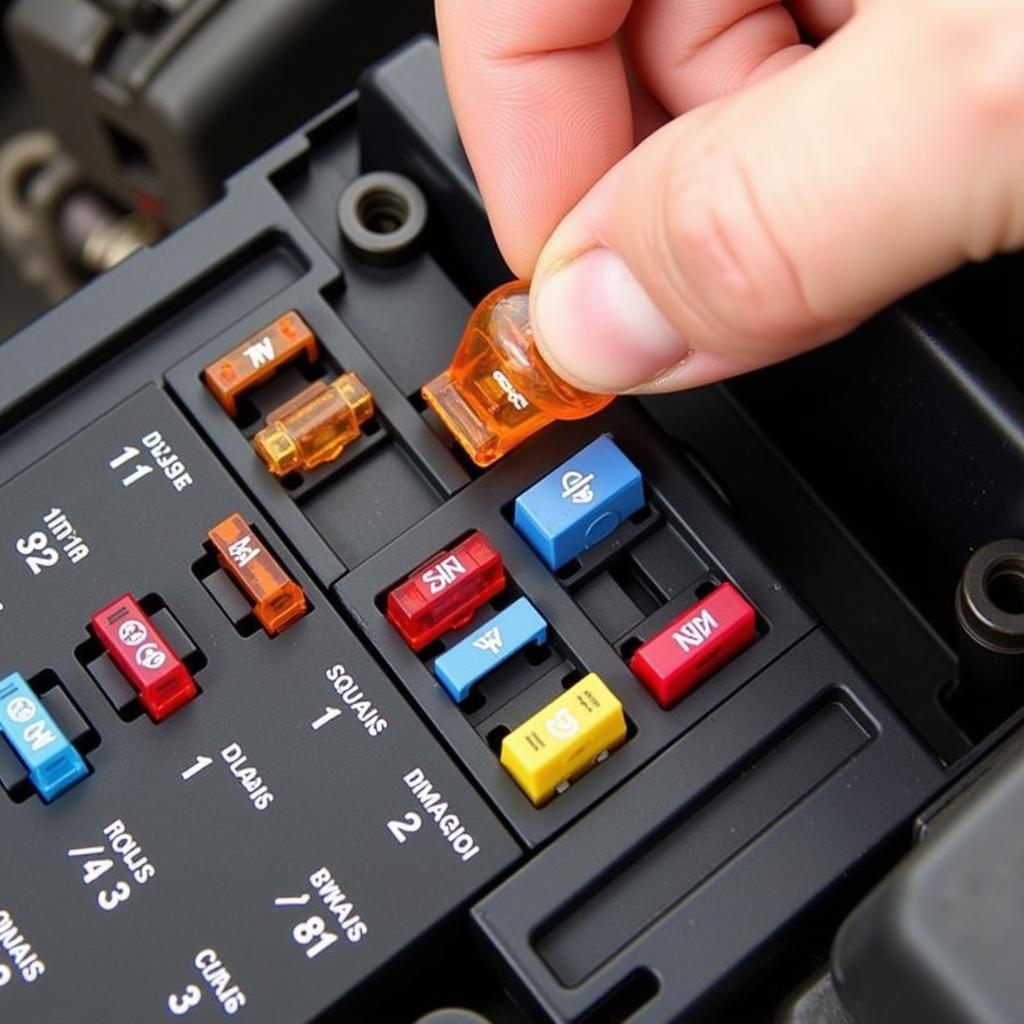Checking battery drain with a voltmeter is a crucial skill for any car owner. This guide provides a detailed, step-by-step approach to identifying parasitic draws and preserving your car battery’s lifespan. We’ll cover everything from basic principles to advanced diagnostic techniques.
If your car battery keeps dying, it’s likely suffering from parasitic drain. This simply means something is drawing power even when the car is off. Identifying and fixing the culprit can save you time, money, and frustration. car battery has 12 volts but wont start explores this issue further, providing valuable insights into why a 12-volt battery might not start your car.
Understanding Battery Drain
Before we dive into testing, let’s understand the basics of battery drain. A healthy battery should maintain its charge for several weeks, even when the vehicle isn’t in use. Excessive drain can be caused by various factors, including faulty components, aftermarket accessories, and even interior lights left on.
What is Parasitic Draw?
Parasitic draw refers to the current that flows from your car battery when the ignition is off. A small amount of current is normal, powering things like the clock and alarm system. However, a higher-than-normal draw can deplete your battery over time.
How to Check for Battery Drain with a Voltmeter
Checking battery drain with a voltmeter is a straightforward process. Here’s a step-by-step guide:
- Gather your tools: You’ll need a digital multimeter set to DC amps (milliamps for higher sensitivity) and a car battery charger (if your battery is already dead).
- Prepare your vehicle: Turn off all lights, accessories, and the ignition. Close all doors and ensure the car is completely off.
- Disconnect the negative battery cable: Loosen the nut securing the negative cable to the battery terminal and remove the cable.
- Connect the voltmeter: Connect the red lead of your multimeter to the negative battery terminal and the black lead to the disconnected negative battery cable. This places the meter in series, allowing it to measure the current flowing out of the battery.
- Observe the reading: The reading you see is the parasitic draw. A healthy draw is typically between 25 and 50 milliamps (0.025-0.050 amps). Anything significantly higher indicates a problem.
- Identify the culprit: Begin removing fuses one at a time, observing the voltmeter reading after each removal. When the reading drops significantly, you’ve likely identified the circuit with the excessive draw. Refer to your owner’s manual to determine which components are on that circuit.
 Removing Car Fuse to Check Parasitic Draw
Removing Car Fuse to Check Parasitic Draw
How Much Drain is Too Much?
Generally, a drain over 50 milliamps is considered excessive and warrants further investigation. Even a seemingly small drain can deplete your battery over time, especially in colder climates.
“A common mistake is assuming a small drain is insignificant,” says John Smith, Senior Automotive Electrical Engineer at AutoTech Solutions. “Over time, even a 75 milliamp draw can kill a battery, especially during periods of infrequent use.”
Common Causes of Battery Drain
Several factors can contribute to excessive battery drain. Here are some of the most common culprits:
- Faulty alternator: While the alternator charges the battery while the engine is running, a failing alternator can also drain it when the car is off. is my alternator bad or battery helps you diagnose whether your alternator or battery is the problem.
- Interior lights: A forgotten dome light, glove compartment light, or trunk light can quickly drain a battery.
- Aftermarket accessories: Incorrectly installed or malfunctioning aftermarket accessories, like stereos or alarms, can draw significant power.
- Faulty door latch switches: If a door latch switch malfunctions, it can keep interior lights on, even when the door appears closed.
- Glove compartment light staying on: A common issue is the glove compartment light staying on due to a faulty switch or a stuck button. This can easily drain the battery.
Knowing the typical reasons for a dead battery can help you narrow down the potential problems.
Preventing Battery Drain
Here are some proactive steps to prevent battery drain:
- Regularly check your battery: A visual inspection can reveal corrosion or other issues.
- Be mindful of accessories: Ensure aftermarket accessories are installed correctly.
- Double-check interior lights: Make it a habit to verify that all interior lights are off before exiting your vehicle.
- Address electrical issues promptly: Don’t ignore warning signs like dimming lights or slow cranking.
“Preventive maintenance is key,” advises Emily Davis, Lead Technician at Auto Electric Diagnostics. “Regularly inspecting your battery and promptly addressing electrical issues can prevent unexpected breakdowns and extend your battery’s lifespan.” A dead battery can leave you stranded. If your car died and wont crank, knowing how to troubleshoot and fix the problem is crucial.
Conclusion
Checking battery drain with a voltmeter is a simple yet powerful diagnostic tool. By understanding how to perform this test, and by knowing the common causes of battery drain, you can keep your car running smoothly and avoid the frustration of a dead battery. Regular maintenance, coupled with the information provided here, will ensure a long and healthy life for your car’s electrical system. Remember to double-check all connections and always consult your vehicle’s manual for specific instructions. The diehard gold battery life can be extended with proper care and attention to potential drain issues.

